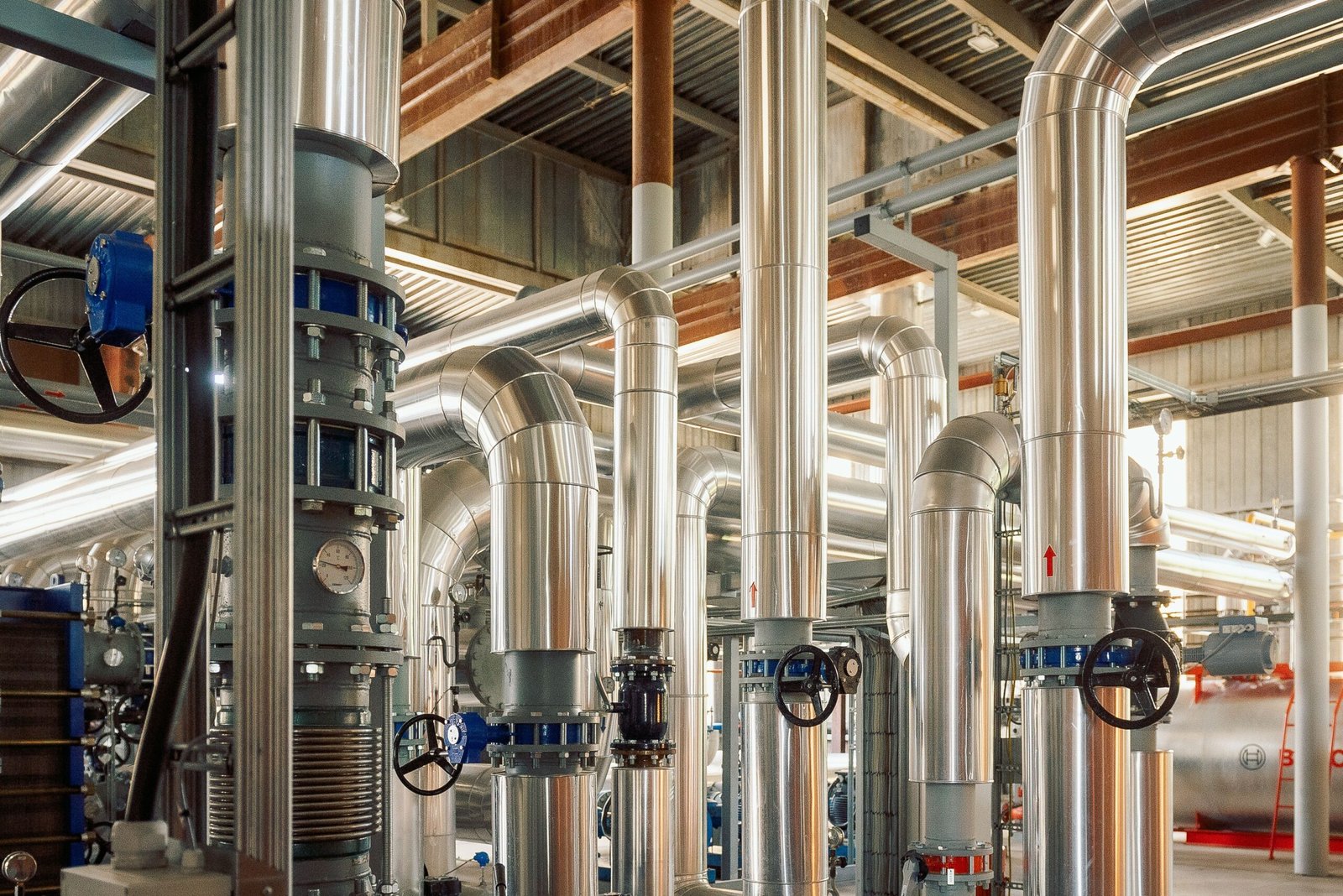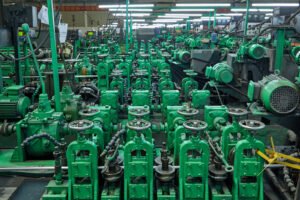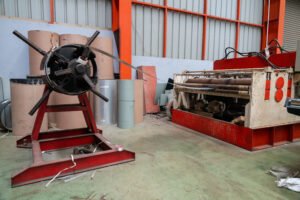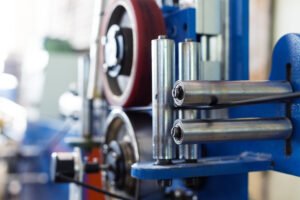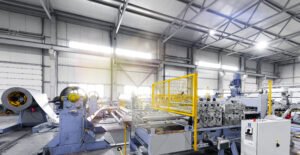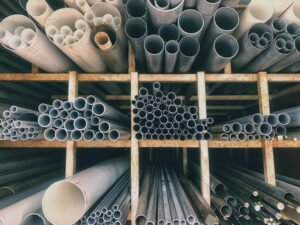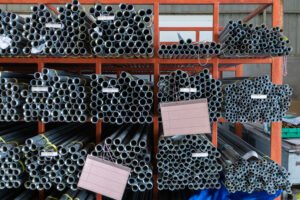Surface Finish Codes: No.4, 2B, BA – Which for Decorative Tubing?
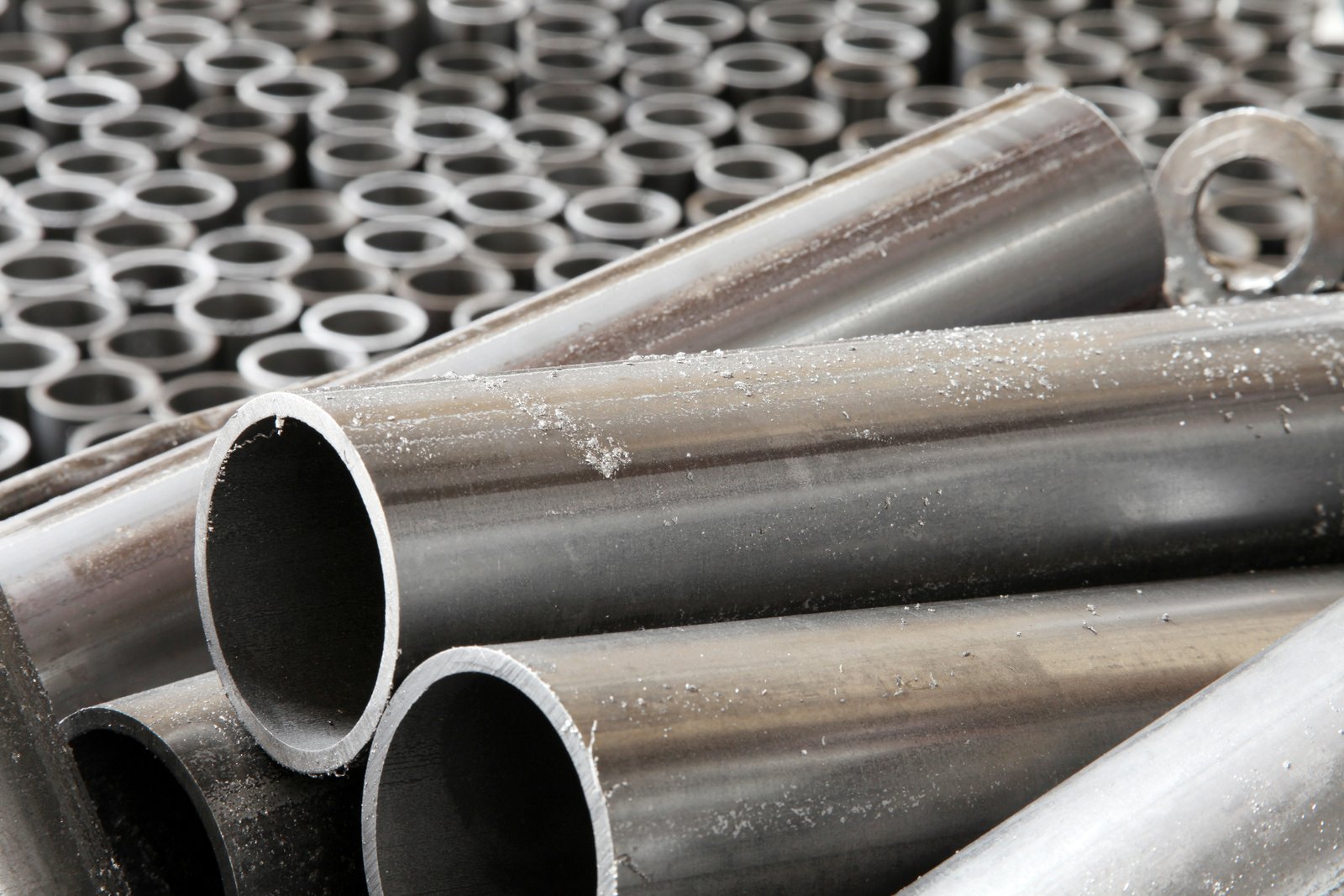
Are you finding yourself lost in a sea of technical codes when specifying stainless steel tubing? Choosing the wrong surface finish can jeopardize the entire aesthetic of a project, turning a vision of sleek, modern design into a dull, industrial reality, a mistake that can be incredibly costly to fix.
No.4, 2B, and BA are three distinct stainless steel surface finishes. 2B is a matte, semi-reflective mill finish, BA is a highly reflective mirror-like finish, and No.4 is a mechanically polished "brushed" or "satin" finish with a directional grain.
This choice goes far beyond what’s written on a spec sheet. I’ve seen clients, particularly engineering contractors focused purely on technical performance, nearly specify a 2B finish for highly visible architectural railings. While functionally sound, it would have completely missed the mark on the architect’s vision for a refined, elegant space. Understanding the visual and tactile differences between these finishes is the crucial first step in translating a design concept into a stunning physical reality.
This decision is a delicate balance of aesthetics, long-term performance, and budget. The path from a raw steel coil to a finished, decorative tube involves distinct manufacturing processes that impart unique characteristics and costs to each finish. Critically, the "best" option is entirely dependent on the application's context—from the lighting of the space to the level of human contact. At MFY, we see our role as not just supplying pipe, but guiding our partners through this critical selection process to ensure the final product doesn't just work, but inspires.
What are the characteristics of No.4, 2B, and BA surface finishes?
Are you staring at a material specification sheet, frustrated by how codes like "2B" and "No.4" fail to paint a clear picture of the final look? This ambiguity often leads to specifying a material that clashes with the project's design intent, a costly and avoidable error.
The primary characteristics are visual and textural. 2B finish is a smooth, cold-rolled, semi-reflective surface. BA (Bright Annealed) is a very smooth, highly reflective, mirror-like finish. No.4 finish has a distinct, directional "brushed" texture that creates a satin sheen.
For our clients, from equipment integrators to construction contractors, moving beyond these definitions to understanding the real-world implications is key. I always encourage them to think of it like choosing paint: 2B is the matte base, BA is the high gloss, and No.4 is the elegant satin. Each interacts with light and touch in a fundamentally different way. We've made it a standard practice at MFY to dispatch physical samples to our clients worldwide, from India to Russia. A photo or video can never truly capture the way a finish diffuses light in a room or feels to the touch. I recall a project for a high-end residential developer in Southeast Asia; they were convinced they needed a BA finish for balcony railings based on digital renderings. Once they held the samples, they immediately switched to a No.4 finish, realizing its softer sheen and resistance to showing fingerprints was far better suited for a luxury living environment. This hands-on experience is irreplaceable and prevents costly assumptions.
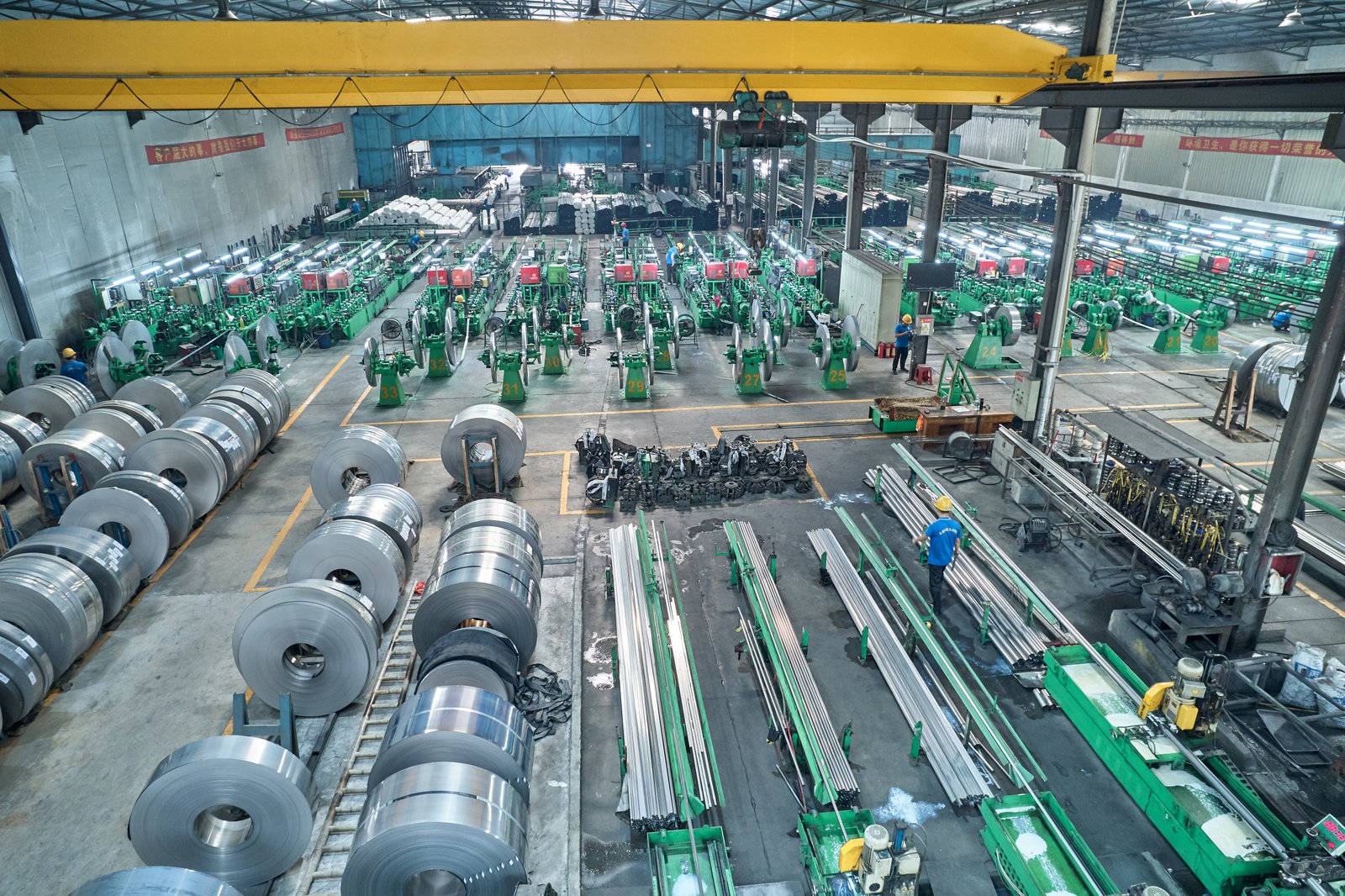
Ultimately, the choice between these finishes is a foundational decision in the design and fabrication process. It dictates not only the final appearance but also informs subsequent handling and maintenance procedures. A 2B finish offers a functional, cost-effective baseline, primarily serving as a canvas for further processing. The BA finish provides a flawless, modern brilliance ideal for creating visual impact and a sense of cleanliness. The No.4 finish delivers a timeless, sophisticated elegance, masterfully balancing aesthetics with practicality. Understanding these core identities, from their creation at the mill to their interaction with light in a finished space, empowers designers, engineers, and distributors to make informed specifications that align perfectly with their project's goals. This deep material knowledge is a cornerstone of the value we strive to provide at MFY.
The Workhorse Finish: Understanding 2B
The 2B finish is the quintessential "mill finish," representing the standard, most cost-effective option for stainless steel sheet and, by extension, the tubes made from it. Its production process is straightforward: the stainless steel is cold-rolled to the desired thickness, which hardens it, and is then softened through annealing (heating) and descaled in a pickling acid bath. A final, light "skin pass" through polishing rollers gives it a smoother surface than a raw annealed finish (2D), resulting in its characteristic appearance.
Visually, a 2B finish is smooth to the touch with a muted, grayish luster. It is moderately reflective but lacks the clarity and brightness of more processed finishes. Its surface roughness (Ra) value is typically in the range of 0.1 to 0.5 micrometers. While it is clean and functional, it is not considered a decorative finish in its own right for high-visibility applications. Its primary role is either for industrial or non-visible parts where aesthetics are secondary to function, or as the starting material for more decorative finishes, like the No.4.
A perfect example of this is a client of ours in the manufacturing sector who produces commercial kitchen equipment. For the internal framework and non-contact surfaces of their food prep tables and carts, they specify 2B finished tubing. It provides the necessary corrosion resistance and strength at an economical price point. The appearance is secondary, as these components are hidden from the end-user's view. Here, choosing a more expensive finish would be an unnecessary cost.
The Mirror-Like Finish: The Brilliance of BA (Bright Annealed)
The Bright Annealed (BA) finish represents a significant step up in aesthetic quality and is achieved through a more controlled manufacturing process. Like 2B, it begins with cold rolling. However, the critical difference lies in the annealing stage. The steel is heat-treated in a highly controlled, oxygen-free atmosphere, typically containing hydrogen or nitrogen. This inert environment prevents the formation of oxide scale on the surface during the heating and cooling process. As a result, no pickling is required, and the steel retains a highly reflective, mirror-like surface.
The appearance of a BA finish is its defining characteristic: it is very smooth, bright, and highly reflective, closely resembling a chrome-plated surface. Its Ra value is considerably lower (smoother) than a 2B finish, often falling below 0.1 micrometers. This extreme smoothness not only provides a brilliant look but also enhances its cleanability and corrosion resistance, as there are fewer microscopic crevices for contaminants to adhere to.
We work with an equipment integrator that fabricates components for the pharmaceutical industry. They exclusively use BA-finished stainless steel tubing for their process lines. The reason is twofold. First, the high-purity environment demands a surface that can be easily and thoroughly cleaned and sterilized. The smoothness of the BA finish is ideal for this. Second, the mirror-like appearance conveys a sense of clinical precision and quality to their end clients, reinforcing the high-tech nature of their equipment.
The Directional Classic: The No.4 "Brushed" Finish
The No.4 finish, often referred to as "satin" or "brushed," is arguably the most common decorative finish in architecture and interior design. Unlike 2B and BA, which are mill finishes created through annealing, the No.4 is a secondary, mechanical finish. The process starts with a sheet of 2B-finished stainless steel, which is then polished in a linear direction with abrasive belts. The grit of these belts, typically ranging from 150 to 240, determines the coarseness of the final texture. This polishing process removes the original 2B surface and imparts a uniform, directional pattern of fine lines.
The result is a finish with a soft, satin sheen. Instead of reflecting images clearly like a BA finish, the No.4 finish diffuses light, which dramatically reduces glare and hides minor imperfections, fingerprints, and smudges. This combination of sophisticated appearance and practical forgiveness makes it exceptionally popular for a wide range of applications.
A major construction contractor we supply in the Middle East uses No.4 finished stainless steel tubes almost exclusively for public-facing elements like handrails, elevator interiors, and wall cladding in their commercial tower projects. The elegant, non-reflective appearance aligns with their desired luxury aesthetic, while the finish's ability to mask minor wear and tear is a critical functional benefit in these high-traffic environments, reducing long-term maintenance costs.
| Характеристика | 2B Finish | BA (Bright Annealed) Finish | No.4 "Brushed" Finish |
|---|---|---|---|
| Manufacturing Process | Cold Rolling, Annealing, Pickling | Cold Rolling, Annealing in controlled atmosphere | 2B sheet is mechanically polished with abrasives |
| Внешний вид | Smooth, matte, grayish luster | Very smooth, mirror-like, bright | Uniform directional lines, satin sheen |
| Reflectivity | Low to Moderate | High (Specular) | Low (Diffuse) |
| Surface Roughness (Ra) | Moderate (~0.1 - 0.5 µm) | Very Low (< 0.1 µm) | Higher than BA, depends on grit |
| Общие приложения | Industrial parts, base for polishing | Architectural trim, appliance panels, mirrors | Handrails, kick plates, elevators, countertops |
BA finish is mirror-likeПравда
BA (Bright Annealed) finish is highly reflective and resembles a chrome-plated surface due to its smooth manufacturing process in oxygen-free environments.
2B finish is decorativeЛожь
2B is a basic mill finish primarily used for industrial applications or as a base for further polishing, not as a decorative finish for visible surfaces.
How do these finishes impact the appearance of decorative tubing?
Have you ever specified a material that looked perfect on a rendering, only for the final installation to feel sterile and cold? The interaction between a surface finish and its surrounding environment is a critical factor that digital models often fail to capture, leading to a disappointing disconnect between design intent and reality.
Surface finishes fundamentally alter the visual impact of tubing by controlling how it reflects light. BA finish creates sharp, bright reflections for a modern look,[No.4 provides a soft, diffused glow for a subtle elegance, and 2B offers a flat, industrial appearance.
The choice of finish is an act of sculpting with light. I recall a consultation with an architectural firm designing a boutique hotel lobby. Their initial plan called for extensive use of BA-finished tubing to create a bright, glamorous feel. However, the lobby design also featured several large, south-facing windows. During our discussion, we anticipated that the direct sunlight would create intense, uncomfortable glare when reflecting off the mirror-like BA surfaces. We provided samples of both BA and No.4 finishes. After viewing them in the actual space, they pivoted to the No.4 finish. Its diffused reflectivity captured the ambient light beautifully, creating a warm, inviting glow without the harsh glare. This experience was a powerful reminder that the "best" appearance is not absolute; it is a function of the interplay between the material, the light, and the intended atmosphere of the space.
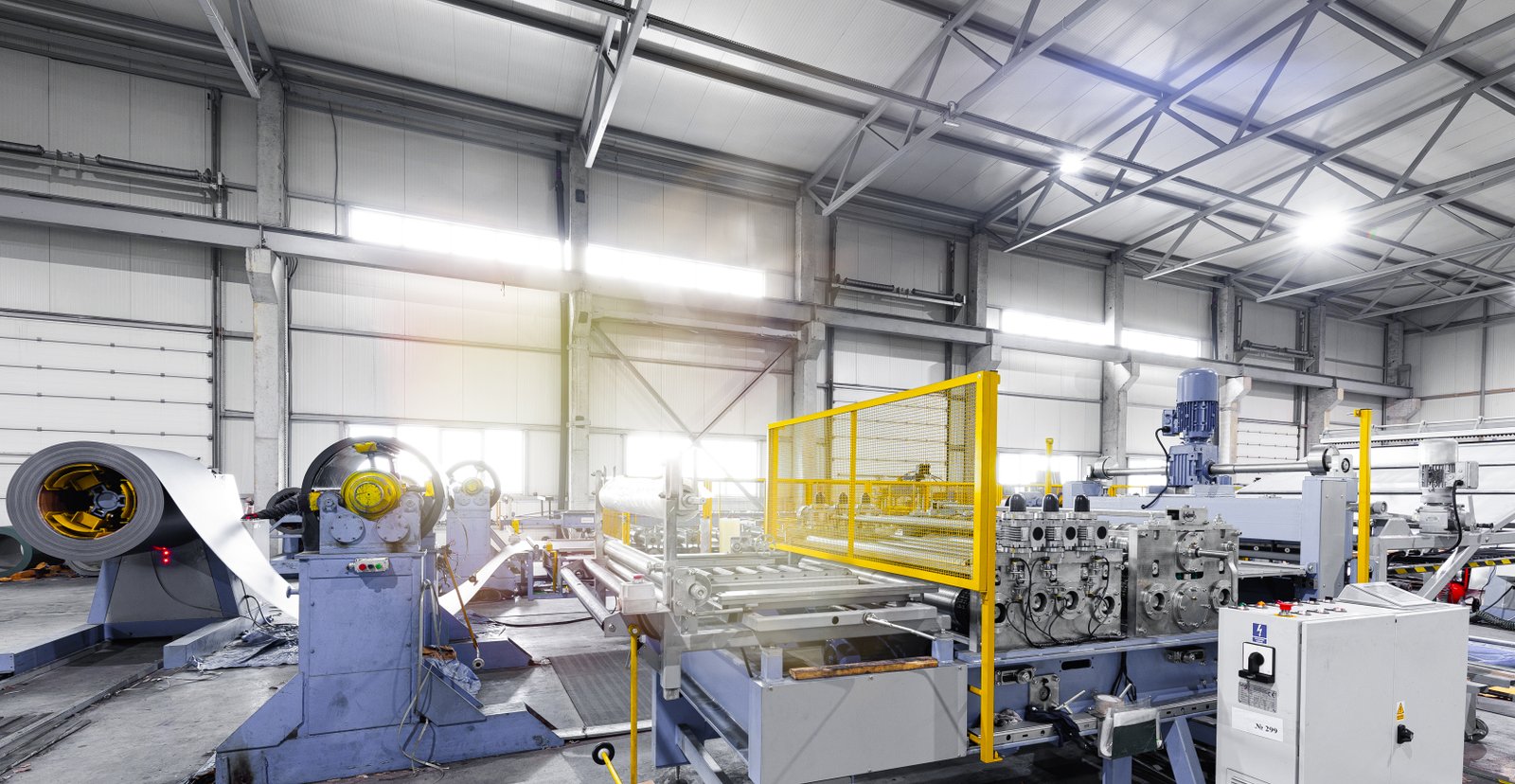
The visual impact of a surface finish is not a superficial detail; it is a core component of the design language. A BA finish speaks of precision, modernity, and cleanliness, using light to expand a space and create crisp, defined lines. A No.4 finish communicates a message of understated luxury, warmth, and permanence, using its texture to soften light and add a layer of tactile sophistication. Even the humble 2B finish can be used intentionally to evoke a raw, industrial authenticity. As a supplier, our responsibility at MFY extends beyond just delivering a product that meets a technical code. It involves a deeper conversation with our clients—the contractors, distributors, and designers—to ensure the stainless steel tubing we provide not only fits the physical requirements but also perfectly fulfills the aesthetic vision of the project.
BA Finish: Maximizing Light and Creating a Sense of Space
The visual signature of a Bright Annealed (BA) finish is its ability to engage in what is known as specular reflection. This means it reflects light rays at the same angle at which they strike the surface, much like a glass mirror. The effect on an environment is dramatic. In interior design, BA-finished decorative tubing can be used strategically to make a space feel larger, brighter, and more open. The sharp, clear reflections bounce light around the room, amplifying both natural and artificial light sources. This property makes it a favorite for modern, minimalist, and high-tech design schemes where clean lines and a sense of uncluttered space are paramount.
The appearance is one of crispness and high definition. The reflections are sharp and undistorted, adding a dynamic quality to the surface. This can be used to great effect in retail environments. We have a client who manufactures high-end display fixtures for luxury brands. They use our BA-finished stainless steel tubes to construct clothing racks and shelving units. The mirror-like surface not only complements the sleek, modern aesthetic of the boutiques but also reflects the colors of the merchandise, creating a vibrant and visually stimulating shopping experience. The finish itself becomes an active part of the display.
However, this high reflectivity must be managed. As seen in the hotel lobby example, in environments with intense, direct light, BA can create overwhelming glare. Its mirror-like surface also readily shows fingerprints, smudges, and surface imperfections, requiring more frequent cleaning to maintain its pristine appearance. It is best suited for applications where a dazzling, high-impact visual is desired and where maintenance is regularly performed.
No.4 Finish: Mastering Understated Elegance and Texture
In stark contrast to BA, the No.4 finish is a master of diffuse reflection. The thousands of tiny, parallel grooves etched onto its surface by the abrasive belts scatter light rays in many different directions. The result is a soft, gentle sheen rather than a sharp reflection. This quality is what lends the No.4 finish its signature understated elegance. It doesn't demand attention with bright flashes of light; instead, it contributes a sense of warmth, texture, and permanence to a design. The directional grain adds a layer of visual interest and tactility that a perfectly smooth finish lacks.
This finish is exceptionally versatile and finds its home in design schemes from classic to contemporary. Its ability to absorb and soften light makes it very forgiving. It is excellent at hiding minor scratches, scuffs, and fingerprints, which is a major functional advantage in high-traffic areas. This is why it is the default choice for applications that combine aesthetic requirements with practical durability. Think of architectural elements like staircase railings, elevator control panels, commercial kitchen backsplashes, and door handles.
I recently worked with an engineering and construction contractor on a new international airport terminal project. They specified tens of thousands of meters of No.4 finished tubing for everything from baggage cart corrals to queue line barriers and handrails. The choice was deliberate. The soft sheen provided the desired sophisticated and clean look for a modern transit hub, while its robust ability to mask the wear and tear of millions of passengers passing through was a critical factor in minimizing long-term maintenance and preserving the "day one" appearance for as long as possible.
2B as a Canvas: The "Industrial Chic" Exception
While the 2B finish is not traditionally classified as decorative, it has found a unique and growing niche in a specific design aesthetic: "industrial chic." In spaces that celebrate raw materials and exposed structural elements, such as converted lofts, warehouses, and contemporary restaurants, the unpolished, functional appearance of 2B can be used intentionally. Its muted, matte surface does not try to be elegant or refined; it is unapologetically industrial, and in the right context, this authenticity is precisely the desired effect.
In this design language, 2B finished tubing might be used for exposed electrical conduit, custom light fixtures, or bar foot rails. It pairs well with other raw materials like reclaimed wood, exposed brick, and concrete. The goal is not to create a polished, perfect space, but one that feels authentic, historical, and utilitarian. It’s a deliberate rejection of refined finishes in favor of a more honest material expression.
However, it is crucial to use this finish with clear intent. I always caution clients to be certain that this "raw" look is what they are truly after. A distributor we work with in Russia had a customer—a small cafe owner—who ordered 2B finished tubes for their interior, thinking it was a standard, low-cost decorative option. The result was a space that felt unfinished and cheap, rather than intentionally industrial. They had to spend additional money to have the tubes polished in place. This serves as a critical lesson: while 2B can be used decoratively, it's a specific stylistic choice, not a default substitute for a properly specified decorative finish like No.4 or BA.
BA finish creates sharp reflectionsПравда
BA finish reflects light at the same angle it strikes, creating mirror-like sharp reflections that amplify light in a space.
No.4 finish hides wear poorlyЛожь
No.4 finish's textured surface actually excels at hiding fingerprints, scratches and scuffs, making it ideal for high-traffic areas.
What are the performance differences among No.4, 2B, and BA finishes?
Are you assuming that if the steel grade is the same, the performance will be identical regardless of the surface finish? This common oversight can lead to premature corrosion or maintenance issues, as the finish itself plays a crucial role in how the tubing interacts with its environment.
Performance differences are significant, especially in corrosion resistance and cleanability. The extreme smoothness of a BA finish offers the highest resistance to corrosion and is easiest to clean. No.4's grooves can trap contaminants, while 2B falls in between.
The surface of stainless steel is protected by a thin, invisible layer of chromium oxide. The smoother and less contaminated this surface is, the more robustly it can protect the steel underneath. A BA finish, being exceptionally smooth and created in a clean environment, offers the most perfect and uniform protective layer. I often explain this to clients using a simple analogy: it's easier to wipe a glass tabletop clean (BA) than a wooden one with a prominent grain (No.4). The same principle applies to corrosion. We once had an inquiry from an equipment integrator building machinery for a coastal food processing plant. They were considering No.4 tubing for its looks, but we strongly recommended BA. In that saline, high-chloride environment, the microscopic grooves of the No.4 finish could trap salt particles, creating initiation sites for pitting corrosion. The BA finish provided the superior performance needed for that harsh application.
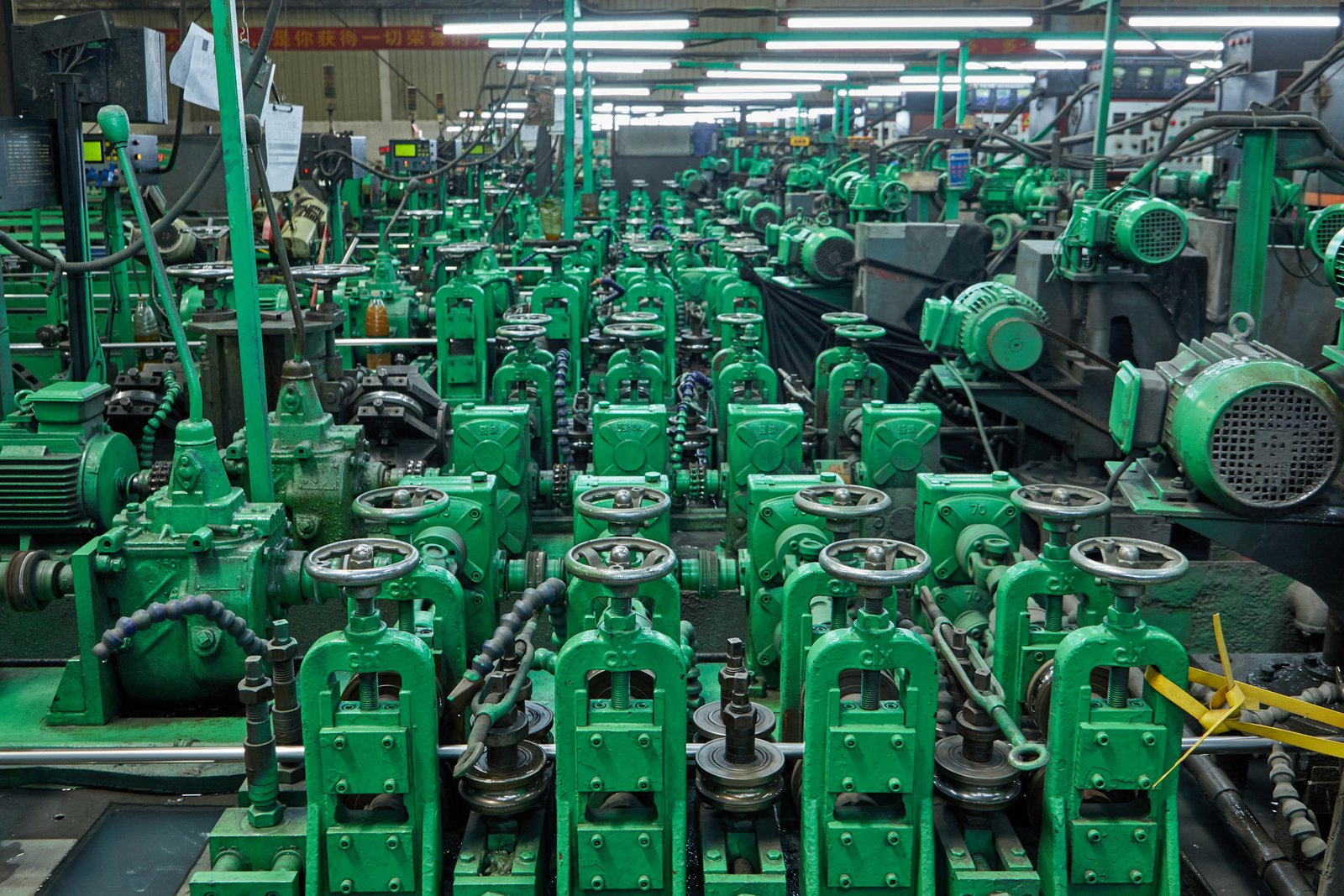
Ultimately, selecting a finish based on performance requires a critical assessment of the application's entire life cycle. While aesthetic considerations are important for decorative tubing, they must be weighed against the realities of the service environment and long-term maintenance demands. The BA finish offers peak performance in terms of corrosion resistance and hygiene due to its unparalleled smoothness. The No.4 finish provides a practical compromise, offering good durability and excellent masking of physical wear, though it requires more diligent cleaning. The 2B finish provides a baseline level of performance suitable for controlled or non-critical environments. At MFY, a core part of our advisory role is helping clients navigate this balance, ensuring the stainless steel tubes they choose will not only look good on day one but will also perform reliably for years to come, reinforcing their reputation for quality and durability.
Performance Pillar 1: Corrosion Resistance
The single most important performance characteristic of stainless steel is its resistance to corrosion, and the surface finish has a direct and profound impact on this property. The protective passive layer of chromium oxide that forms on the steel's surface is the key to its resilience. A smoother, cleaner, and more uniform surface allows for a more robust and complete passive layer. Any surface imperfection, groove, or contamination can become a potential weak point where corrosion can begin.
The BA finish is the clear performance leader in this regard. Its mirror-like, non-porous surface, a result of being annealed in an oxygen-free environment, is the ideal canvas for a strong passive layer. It has the lowest possible surface area for contaminants to adhere to and the fewest microscopic crevices where corrosive agents like chlorides can accumulate. This makes BA the superior choice for highly corrosive environments, such as marine applications, coastal architecture, and chemical or food processing facilities where harsh cleaning agents are used.
The No.4 finish, while aesthetically pleasing, presents a more complex scenario. The very process of creating the brushed texture—mechanically abrading the surface—creates fine grooves. These grooves increase the total surface area and can potentially trap moisture, salt, dirt, or other corrosive particles. If not cleaned properly, these trapped contaminants can lead to localized corrosion, such as pitting or crevice corrosion. While still highly resistant compared to other metals, a No.4 finish is measurably less corrosion-resistant than a BA finish of the same steel grade. The 2B finish sits between the two, being smoother than a No.4 but less perfect than a BA.
Performance Pillar 2: Cleanability and Hygiene
In applications where hygiene is critical, such as in the food and beverage industry, pharmaceuticals, or healthcare facilities, cleanability is a paramount performance metric. The ease with which a surface can be cleaned and sanitized is directly related to its smoothness and lack of texture. A smoother surface prevents microbial and particulate adhesion and makes removal more effective.
Here again, the BA finish excels. Its exceptionally low surface roughness (Ra) means there are virtually no microscopic valleys for bacteria or soil to hide in. Cleaning is efficient and effective, making it the ideal specification for sanitary applications. This is why you will often see BA-finished tubing and components in dairies, breweries, and biopharmaceutical plants. The surface supports the highest levels of hygiene.
The No.4 finish poses a challenge for cleanability. The directional grooves that give it its attractive appearance can also harbor bacteria and make complete cleaning more difficult. For sanitary applications, if a brushed finish is desired for aesthetic reasons, it is critical that the tubes are installed with the grain oriented vertically to promote drainage and that rigorous cleaning protocols are followed. The 2B finish is moderately easy to clean but does not offer the high-purity assurance of a BA finish. For any application governed by sanitary standards, BA is the safest and most reliable performance choice.
Performance Pillar 3: Durability and Scratch Resistance
Durability in the context of decorative finishes often relates to how well the surface withstands daily wear and tear and how it masks evidence of damage like scratches. This is one performance area where the No.4 finish has a distinct advantage over BA.
The high reflectivity of a BA finish makes it a canvas that highlights every imperfection. A scratch, even a minor one, will be immediately visible as it disrupts the perfect mirror-like surface. While the material itself is hard, the appearance of the BA finish is delicate. It is best suited for applications with limited physical contact or where a pristine look is the top priority and can be maintained.
The No.4 finish, on the other hand, is designed to be forgiving. Its existing pattern of fine, directional lines is excellent at camouflaging minor scratches and scuffs that run parallel to the grain. A new scratch simply blends in with the existing texture, making it far less noticeable than it would be on a BA surface. This inherent ruggedness is why No.4 is the dominant choice for high-contact, high-traffic decorative applications. Handrails, wall protection, countertops, and elevator panels all benefit from this practical durability, maintaining their aesthetic integrity for longer with less maintenance.
| Performance Metric | BA (Bright Annealed) Finish | No.4 "Brushed" Finish | 2B Finish |
|---|---|---|---|
| Устойчивость к коррозии | Excellent: Smoothest surface provides the most robust passive layer. | Good: Grooves can trap contaminants, slightly reducing resistance. | Good: Better than No.4 but not as robust as BA. |
| Cleanability / Hygiene | Excellent: Non-porous, easy to sterilize. Ideal for sanitary use. | Fair: Grooves can harbor bacteria; requires diligent cleaning. | Good: Generally smooth and easy to clean for non-sanitary use. |
| Scratch Resistance | Poor (Visual): Scratches are highly visible on the mirror surface. | Excellent (Visual): Directional grain effectively hides minor scratches. | Fair: Scratches are more visible than on No.4 but less than on BA. |
| Best For | Corrosive environments, sanitary applications, high-impact visuals. | High-traffic areas, functional aesthetics, hiding daily wear. | Industrial use, non-visible components, base for other finishes. |
BA finish has best corrosion resistanceПравда
BA's mirror-smooth surface creates the most robust passive chromium oxide layer, with minimal crevices for contaminants to accumulate.
No.4 finish hides scratches betterПравда
The directional grain pattern of No.4 finish effectively camouflages minor scratches that would be glaringly visible on BA surfaces.
Which finish is best suited for specific decorative tubing applications?
Are you struggling to match the right finish to the right job? Applying a "one-size-fits-all" approach to specifying decorative tubing is a recipe for failure, leading to a product that is either visually inappropriate, fails prematurely, or is unnecessarily expensive for its purpose.
The best finish is application-dependent. For high-end architectural trim and sanitary applications, BA (Bright Annealed) finish is ideal. For high-traffic, functional aesthetics like handrails and wall panels, No.4 finish is superior. 2B is rarely used for final decorative purposes except in specific industrial-style designs.
Matching the finish to the application is a core part of my role when advising clients. It’s about asking the right questions. Where will this tube live? Will people be touching it every day? Will it be exposed to salt, rain, or harsh chemicals? A distributor working on a bid for a public transit system will have vastly different needs than an equipment integrator building a cleanroom. For the former, the durability and scratch-masking of a No.4 finish on railings is paramount. For the latter, the cleanability and corrosion resistance of a BA finish is non-negotiable. Thinking through the specific context of use is the only way to make a choice that delivers both aesthetic beauty and long-term value.
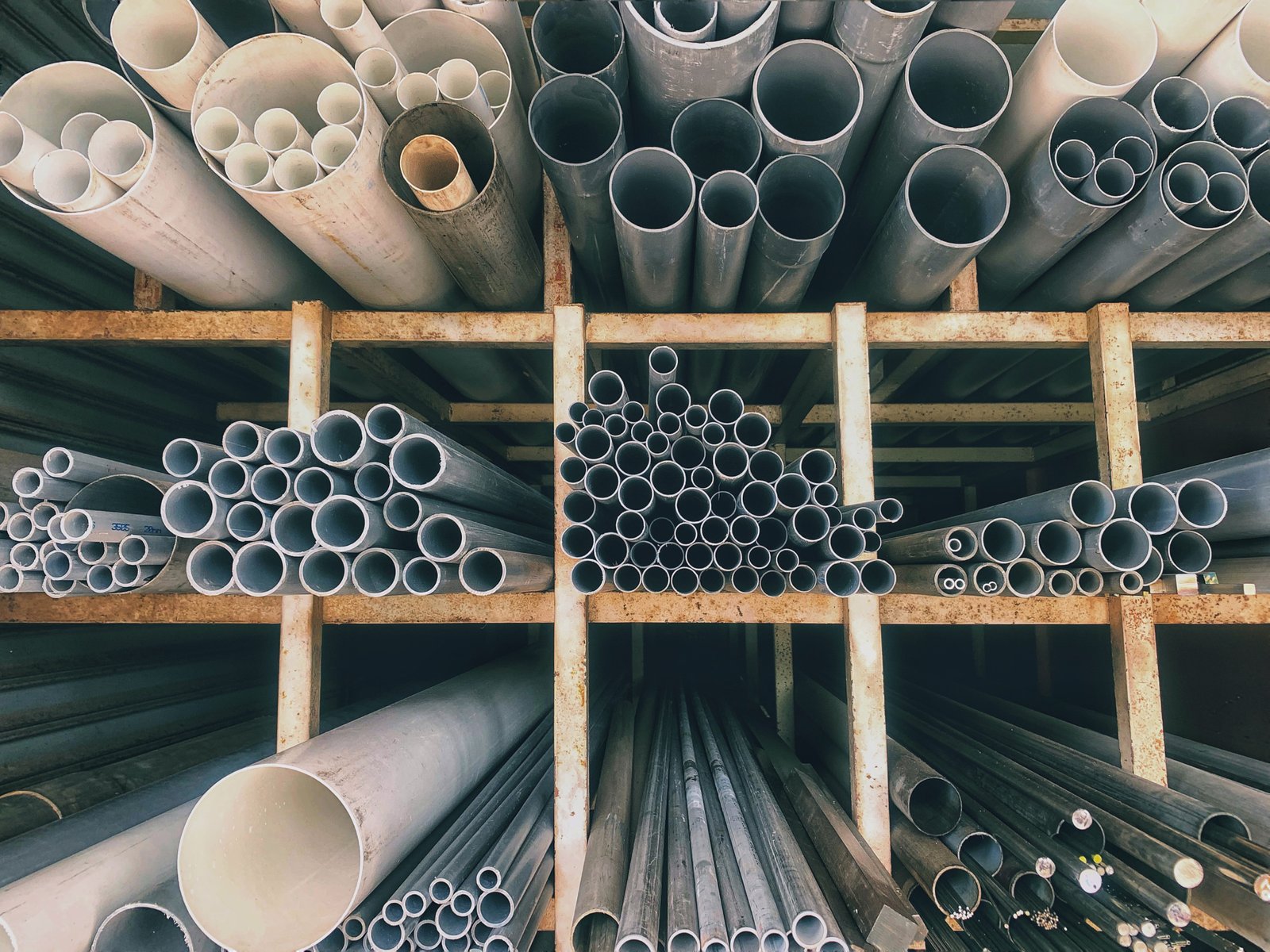
In the end, the process of selecting a surface finish is an exercise in matching the specific strengths of a material to the specific demands of an application. There is no single "best" finish, only the finish that is most appropriate for the intended function, environment, and aesthetic. BA shines where brilliance, hygiene, and corrosion resistance are paramount. No.4 excels where elegance must be paired with durability and practicality in high-contact areas. And 2B serves its purpose as a functional starting point or a deliberate "raw" design choice. By taking a holistic view of the application, our clients and partners can specify with confidence, ensuring the decorative tubing they source from MFY not only meets the drawing's requirements but also succeeds in its real-world environment.
Application 1: High-Traffic Architectural and Public Spaces
In environments characterized by high levels of human contact and traffic—such as airports, subway stations, shopping malls, and building entrances—the primary concerns are durability, maintainability, and public safety. Decorative tubing in these areas is used for handrails, protective barriers, wall cladding, and column covers. The finish must look good but also withstand constant use and abuse.
Recommended Finish: No.4 "Brushed"
The No.4 finish is the undisputed champion for these applications. Its key advantage is the ability of its directional grain to camouflage fingerprints, smudges, and minor scratches, which are inevitable in a public space. This significantly reduces the visibility of daily wear and tear, lowering maintenance burdens and keeping the space looking clean and well-maintained for longer. A BA finish in the same environment would look perpetually smudged and scratched, while a 2B finish would lack the required aesthetic refinement. The soft, diffuse reflection of the No.4 finish also prevents glare from bright overhead lighting, contributing to a more comfortable and safer environment. It offers the perfect marriage of sophisticated aesthetics and rugged practicality.
Application 2: High-End Interior, Retail, and Appliance Design
In applications where the goal is to create a high-impact, modern, and luxurious visual statement, the surface finish itself is a primary design element. This includes high-end retail fixtures, premium appliance panels and trim, modern furniture, and specific architectural features like decorative screens or ceiling elements in a clean, contemporary space.
Recommended Finish: BA (Bright Annealed)
The BA finish is the ideal choice when a sharp, brilliant, and pristine look is the goal. Its mirror-like reflectivity creates a sense of brightness, openness, and precision that is synonymous with modern luxury. In a retail setting, it can make a space feel more glamorous and expansive. On a high-end appliance, it conveys a sense of quality and technological sophistication. While it requires more diligent cleaning to maintain its fingerprint-free appearance, in these controlled, high-value applications, the stunning visual impact is often worth the maintenance effort. Furthermore, in applications like kitchen or bar backsplashes, the superior cleanability of BA is a significant functional benefit.
Application 3: Sanitary and Corrosive Environments
This category includes applications where hygiene and/or resistance to harsh environments are the most critical performance factors, and the aesthetics, while secondary, should still convey cleanliness and quality. Examples include tubing for food and beverage processing, pharmaceutical manufacturing, laboratory equipment, and architectural elements in coastal or marine environments.
Recommended Finish: BA (Bright Annealed)
For these demanding environments, the superior performance of the BA finish makes it the only logical choice. Its incredibly smooth, non-porous surface offers the highest level of corrosion resistance against salt, chemicals, and harsh cleaning agents. More importantly, in sanitary applications, this smoothness prevents the adhesion of bacteria and biofilms, making it significantly easier to clean and sterilize to a microbial level. The bright, clean appearance of the BA finish also serves as a visual confirmation of its hygienic properties, which is important for quality assurance in these regulated industries. Using a No.4 finish in such an application would introduce unnecessary risk of both corrosion and contamination.
No.4 finish hides scratches wellПравда
The directional grain of No.4 finish effectively camouflages fingerprints and minor scratches in high-traffic areas.
BA finish is best for handrailsЛожь
BA finish would show smudges and scratches in high-traffic areas; No.4 is superior for handrails.
What are the recommended practices for selecting the right surface finish for decorative tubing?
Are you making your finish selection in a vacuum, based only on a photo or a line item on a bill of materials? This is a common pitfall that ignores the crucial interplay of aesthetics, environment, and budget, potentially leading to a choice you'll later regret.
Recommended practice involves a holistic, multi-step evaluation. First, clearly define the desired aesthetic. Then, critically assess the service environment for factors like traffic and corrosion. Lastly, and most importantly, always obtain and review physical samples in the intended lighting conditions.
Selecting the right finish is a process of disciplined inquiry, not a quick guess. It's a checklist I run through with every client to ensure their choice is sound. It’s not about what I think looks best; it’s about what will perform best for their specific project. I’ve seen firsthand how this structured approach prevents costly errors. A client who was about to order BA tubing for an entire outdoor plaza quickly changed to No.4 after we walked them through this process, realizing the maintenance nightmare BA would cause with rain, dust, and constant public contact. This proactive consultation is key to ensuring success.
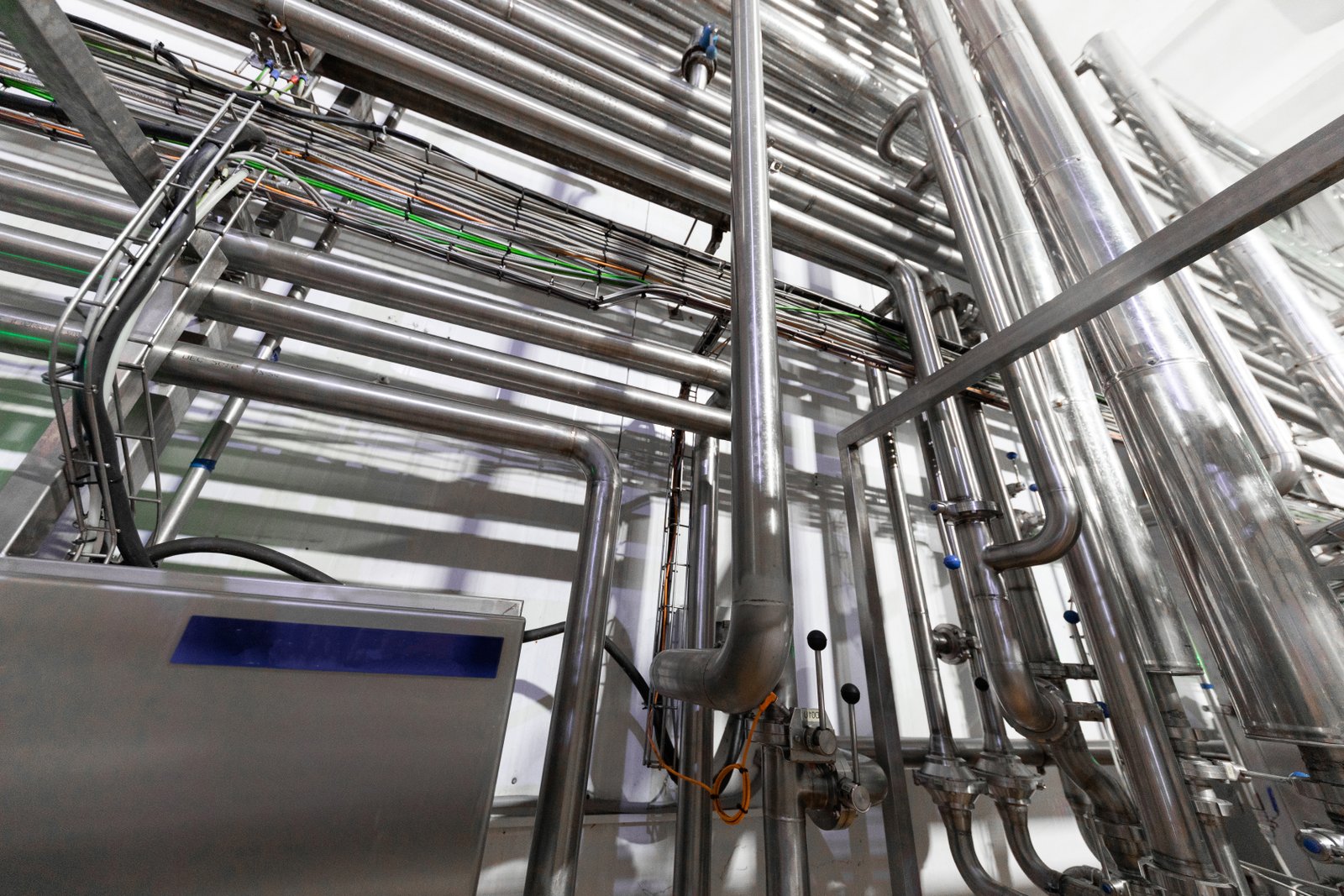
In conclusion, the selection of a surface finish for decorative tubing is a critical design decision that should never be rushed or taken lightly. It demands a thoughtful and structured approach. By following the recommended practices—defining the aesthetic vision, analyzing the real-world environment, considering the life-cycle cost, and insisting on physical samples—you can move beyond technical codes and make an informed choice. This diligence ensures a harmonious balance between beauty and function. At MFY, we champion this consultative process, empowering our partners to select a finish that will not only meet their immediate needs but will also deliver lasting performance and value, strengthening the final project and the supply chain that builds it.
Practice 1: Define the Aesthetic and Functional Intent
Before you can select a finish, you must have a crystal-clear understanding of what you are trying to achieve. This is the foundational step. Ask critical questions about the design vision. Is the goal to create a bright, modern, high-impact space, or a soft, warm, and understated one? Is the tubing meant to be a standout feature or a subtle, integrated element? This is the aesthetic intent.
Simultaneously, you must define the functional intent. What is the primary job of this tubing beyond looking good? Is it a handrail that will be touched thousands of times a day? Is it a food-contact surface that must be sanitized? Is it an outdoor element that will be battered by rain and sun? Answering these questions will create a clear profile of requirements. For example, the intent for a hospital handrail would be "Aesthetically clean and professional, functionally durable, easy to clean, and able to hide minor wear." This profile immediately points toward a No.4 finish and away from a BA finish. Without this clarity, your choice will be unguided.
Practice 2: Analyze the Service Environment and Lighting
No decorative tubing exists in isolation. Its appearance and performance are dictated by its surroundings. A critical recommended practice is to conduct a thorough analysis of the specific service environment. The key factors to consider are traffic/contact level (high or low), exposure to moisture (indoor/outdoor, humidity), and exposure to corrosive agents (salt from coastal air, chemicals from cleaning, pollution). This analysis will determine your performance requirements for durability and corrosion resistance.
Just as important is to analyze the lighting conditions. The same finish will look dramatically different under the harsh, direct light of a sun-drenched atrium versus the soft, diffuse, and warm-toned artificial light of an intimate restaurant. High-gloss finishes like BA can create unpleasant "hot spots" and glare under direct light, while textured finishes like No.4 can look dull and lifeless if not lit properly. If possible, observe the intended installation location at different times of the day to understand the dynamic lighting conditions. This analysis will prevent unwelcome visual surprises after installation.
Practice 3: Always, Always Request and Review Physical Samples
This is the single most important practice and the one that I cannot overemphasize. Renderings, photographs, and videos are useful for initial concepts, but they can be deeply misleading. The way a metallic surface reflects and diffuses light is incredibly complex and cannot be perfectly replicated on a screen. Furthermore, the tactile quality and true color tone of a finish can only be appreciated by holding it in your hand.
Insist on receiving physical samples1 of the finishes you are considering. Once you have them, do not review them in your office under fluorescent lights. Take the samples to the actual project site or a location with comparable lighting conditions. Hold them vertically, as they would be installed. Look at them from different angles. Place them next to other materials that will be used in the project (wood, stone, fabric). This real-world review is the ultimate test and will reveal the true character of the finish in its intended context. This step costs nothing but a little time and is the most effective insurance policy against making a costly aesthetic mistake. It is a standard service we provide at MFY precisely because we know how vital it is to our clients' success.
Physical samples are essentialПравда
The article emphasizes that physical samples must be reviewed in the actual lighting conditions of the project site to make an informed decision.
BA finish is ideal for outdoor useЛожь
The article specifically warns against using BA finish for outdoor applications due to maintenance issues, recommending No.4 finish instead.
Заключение
Ultimately, selecting the right surface finish—No.4, 2B, or BA—is a crucial decision balancing aesthetics, performance, and application context. By understanding each finish's unique interaction with light and its environment, you can ensure your decorative tubing project achieves both its intended beauty and its required longevity.
-
Explore how physical samples ensure accurate selection ↩
У вас есть вопросы или нужна дополнительная информация?
Свяжитесь с нами, чтобы получить индивидуальную помощь и квалифицированный совет.
